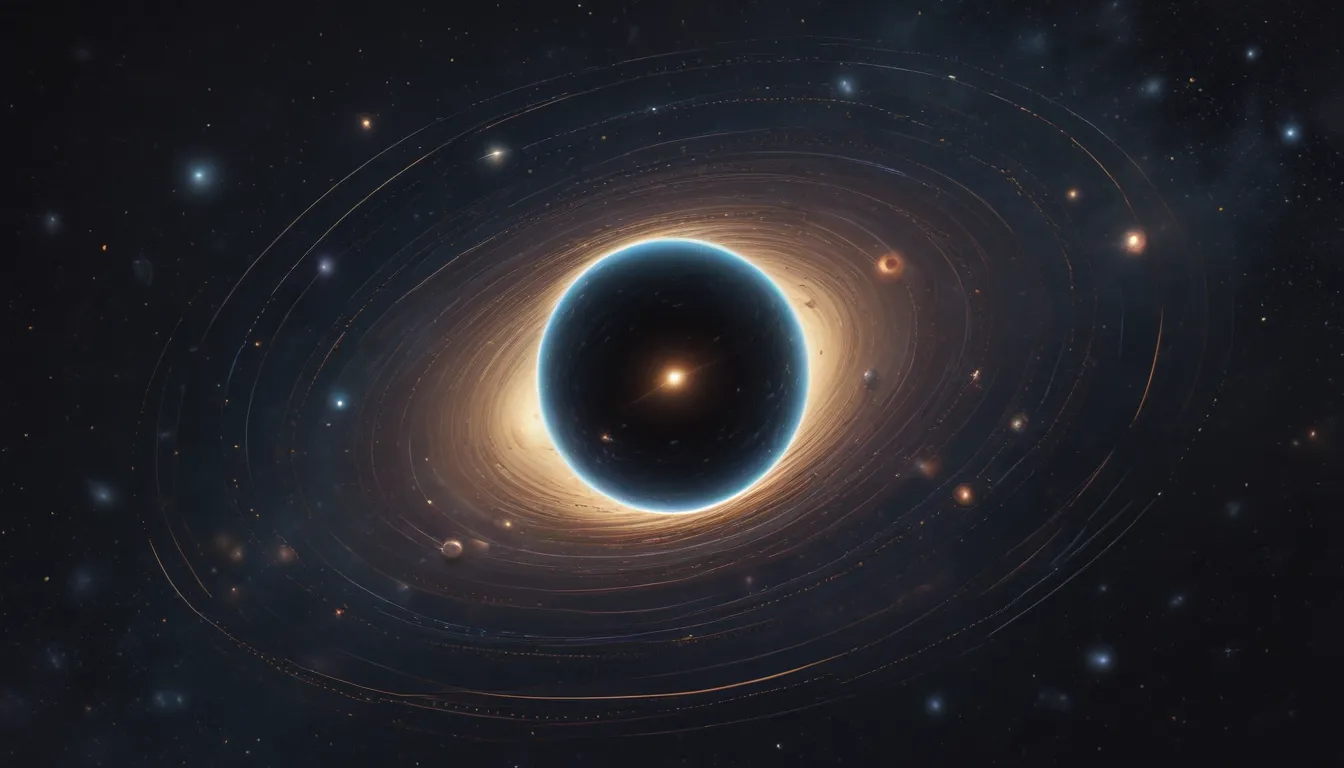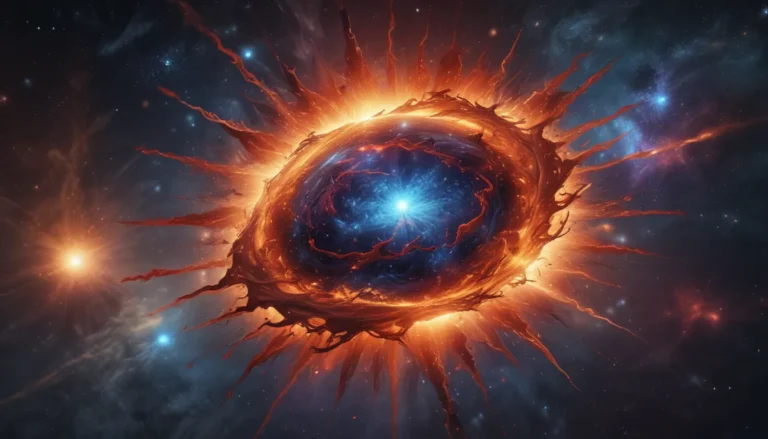The pictures we use in our articles might not show exactly what the words say. We choose these pictures to make you interested in reading more. The pictures work together with the words but don’t take their place. The words still tell you the important facts.
Are you fascinated by the mysteries of the universe and eager to learn more about groundbreaking astronomical research? Gravitational lensing surveys have revolutionized the way astronomers study the cosmos, offering unprecedented opportunities to explore distant galaxies, dark matter, and the expansion of the universe. In this comprehensive guide, we will delve into the fascinating world of gravitational lensing surveys and uncover 19 surprising facts that will expand your cosmic knowledge and inspire your curiosity.
Unveiling the Wonders of Gravitational Lensing Surveys
Gravitational lensing surveys utilize the remarkable phenomenon predicted by Einstein's theory of general relativity, where the gravitational force of massive objects bends and magnifies light from more distant objects behind them. This bending of light allows astronomers to discover new galaxies, study dark matter, and unlock the secrets of the universe.
The Origins of Gravitational Lensing
Albert Einstein's theory of general relativity, published in 1915, first predicted the concept of gravitational lensing. This groundbreaking theory proposed that massive objects can curve the fabric of spacetime, causing light to bend as it passes near them.
Observing Gravitational Lensing in Action
The first confirmed observation of gravitational lensing occurred in 1919 during a solar eclipse, when British astronomer Sir Arthur Eddington observed the bending of starlight by the Sun. This observation provided experimental evidence for Einstein's theory and marked the beginning of gravitational lensing studies.
Discovering New Galaxies Through Lensing
Gravitational lensing surveys enable astronomers to discover new galaxies by magnifying and distorting the light from extremely distant galaxies. This revolutionary technique allows scientists to study galaxies that would otherwise be too faint to detect.
Shedding Light on Dark Matter
One of the most significant contributions of gravitational lensing surveys is their ability to indirectly detect dark matter. By analyzing the gravitational lensing effects on light traveling through the universe, scientists gain insights into the distribution of dark matter and its impact on cosmic structures.
Exploring Einstein Rings and Multiple Images
In gravitational lensing, when a massive object aligns perfectly between a distant light source and an observer, it creates circular rings of light known as Einstein rings. Additionally, lensing can produce multiple, distorted images of a single background galaxy, providing valuable insights into different aspects of these distant objects.
Microlensing and the Detection of Compact Objects
Microlensing occurs when a compact object passes in front of a background source, causing a temporary increase in brightness. This technique is crucial for studying small, compact objects such as exoplanets and dark matter substructures.
Advancing Our Understanding of the Universe
Gravitational lensing surveys contribute significantly to our knowledge of the cosmos, offering insights into the expansion of the universe, the large-scale distribution of matter, and the validation of gravitational theories.
Contributing to the Hubble Constant Measurement
By studying the time delays between multiple lensed images of distant quasars, astronomers can determine the Hubble constant, which describes the rate of expansion of the universe. This measurement is essential for understanding the dynamics of cosmic evolution.
Mapping the Large-Scale Structure of the Universe
Through the analysis of gravitational lensing events, scientists can infer the distribution of matter in the universe and gain a better understanding of its evolution over time. This mapping of large-scale structures provides valuable insights into the cosmic web of galaxies and clusters.
Exploring the Cosmic Microwave Background
Gravitational lensing can distort the faint patterns imprinted on the cosmic microwave background radiation, offering valuable clues about the early universe. By magnifying these patterns, scientists can unravel the mysteries of cosmic evolution and the formation of galaxies.
Testing Alternative Theories of Gravity
Gravitational lensing surveys play a crucial role in testing alternative theories of gravity by comparing observed lensing effects with predictions from different gravitational models. This process helps scientists probe the validity of Einstein's general relativity and explore new explanations for the force of gravity.
Engaging Citizen Scientists
Projects like “Space Warps” and “Zooniverse” allow the public to participate in gravitational lensing surveys by discovering and classifying gravitational lenses. This engagement of citizen scientists from diverse backgrounds enhances the collective effort to advance scientific research.
Unveiling the Mysteries of Dark Energy and Exoplanets
Gravitational lensing surveys have led to groundbreaking discoveries related to dark energy, exoplanets, and the distribution of matter in the universe. These surveys continue to push the boundaries of our knowledge and offer exciting opportunities for future exploration.
Confirming the Existence of Dark Energy
Through gravitational lensing surveys, astronomers have confirmed the existence of dark energy by measuring the distance and brightness of supernovae observed through gravitational lensing. This discovery has provided significant evidence for the accelerated expansion of the universe driven by dark energy.
Magnifying Distant Quasars
The immense gravitational pull of massive galaxies can magnify the brightness of background quasars, making them visible even at extreme distances. Gravitational lensing surveys enable astronomers to study these distant objects and unravel the mysteries of the cosmos.
Estimating Mass Through Time Delays
Time delays in gravitational lensing can be used to estimate the mass of lensing objects such as galaxies or clusters. By studying the delays between different lensed images of distant objects, astronomers can gain insights into the mass distribution of cosmic structures.
Refining Our Understanding of Dark Matter
By mapping the distortions in the shapes of lensed galaxies, scientists can refine their understanding of the distribution of dark matter in the universe. This research sheds light on the role of dark matter in the formation of galaxies and the evolution of cosmic structures.
A Bright Future for Gravitational Lensing Surveys
As advancements in telescopes, data analysis techniques, and computational power continue to enhance gravitational lensing surveys, we can expect even more discoveries and breakthroughs in our exploration of the cosmos. These surveys offer a gateway to unlocking the mysteries of the universe and expanding our understanding of its vast complexities.
Unraveling the Cosmic Tapestry: Conclusion
Gravitational lensing surveys have provided astronomers with a powerful tool to unravel the mysteries of the universe, from confirming Einstein's theory of general relativity to mapping the distribution of dark matter and dark energy. By exploring the 19 surprising facts about gravitational lensing surveys, we have gained a deeper appreciation for the wonders of the cosmos and the groundbreaking research that continues to shape our understanding of the universe.
Frequently Asked Questions
Q: What is gravitational lensing?
A: Gravitational lensing is a phenomenon where light from a distant object is bent by the gravitational pull of a massive object, creating distorted images or multiple images of the object.
Q: How do gravitational lensing surveys work?
A: Gravitational lensing surveys involve observing large patches of the sky to identify and study instances of gravitational lensing. This process helps astronomers gather data on the distribution of matter, dark matter, and the evolution of galaxies.
Q: What can we learn from gravitational lensing surveys?
A: Gravitational lensing surveys provide insights into the structure and distribution of dark matter, the formation of galaxies, the discovery of exoplanets, and the measurement of cosmic distances.
Q: Are there practical applications of gravitational lensing surveys?
A: Yes, in addition to expanding our knowledge of the universe, gravitational lensing surveys have practical implications in fields such as astrophysics, cosmology, and the search for habitable exoplanets.
Q: Can gravitational lensing surveys help us understand the nature of space-time?
A: Yes, gravitational lensing surveys indirectly provide evidence for the theory of general relativity, which describes the curvature of space-time caused by massive objects.
Q: Are there upcoming gravitational lensing surveys?
A: Yes, several future missions and projects, such as the Euclid mission and the Large Synoptic Survey Telescope (LSST), aim to conduct extensive gravitational lensing surveys to further our understanding of the universe and its mysteries.
Explore the universe with curiosity and wonder as you embark on a cosmic journey through the lens of gravitational surveys. Each discovery and insight expands our cosmic horizons, offering an ever-evolving tapestry of knowledge and discovery. Join us in unraveling the mysteries of the cosmos and embracing the marvels of gravitational lensing surveys.






